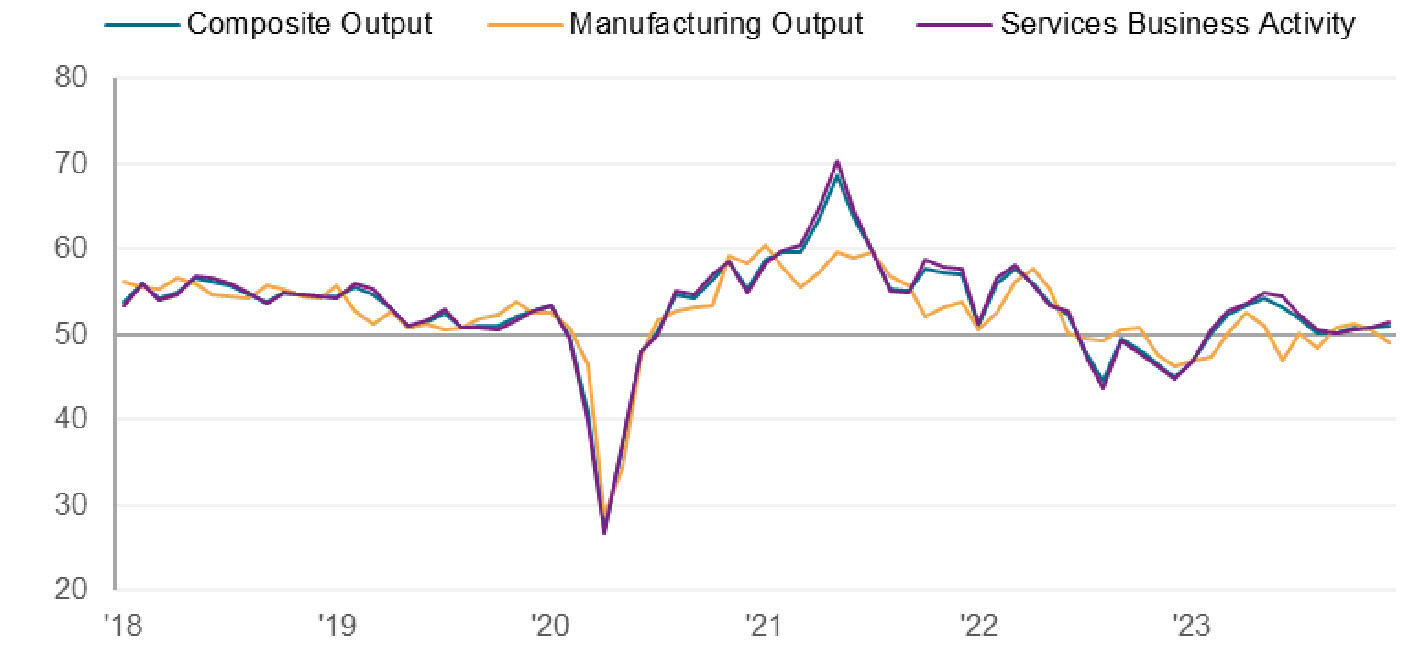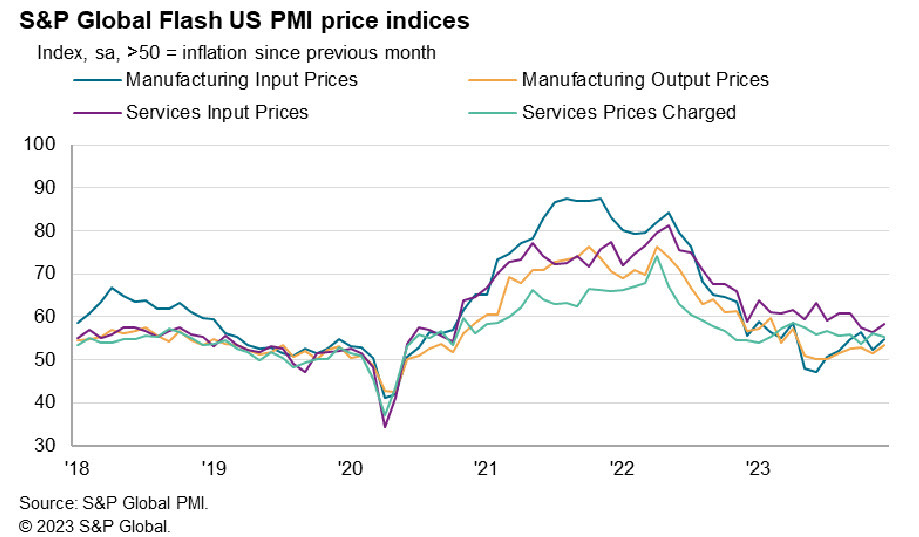
- Prior was 49.4
- Manufacturing 48.2 vs 49.3 expected (prior 49.8)
- Composite index 51.0 vs 50.7 prior
- Cost pressures gained momentum as input prices increased at the quickest pace since September
- Although firms continued to pass through higher costs to customers, and at a strong rate, the overall pace of prices charged inflation softened from November
- Employment improves, highest since Sept
The services PMI hit a five-month high on a jump in new orders. Eyes are on inflation and there was a small uptick here. That's not moving in the right direction but it's tough to get excited about a small uptick.

The services PMI hit a five-month high on a jump in new orders.
Comments in the report from Chris Williamson, Chief Business Economist at S&P Global Market Intelligence:
"The early PMI data indicate that the US economy picked up a little momentum in December, closing off the year with the fastest growth recorded since July.
“Looser financial conditions have helped boost demand, business activity and employment in the service sector, and have also helped lift future output expectations higher. However, the increased cost of living and cautious approach to spending by households and businesses means the overall rate of service sector growth remains far short of that witnessed during the travel and leisure revival back in the spring and summer.
“Manufacturing meanwhile remains a drag on the economy, with an increased rate of order book decline prompting factories to reduce production, cut back on headcounts and scale back their input buying.
“Despite the December upturn, the survey therefore signals only weak GDP growth in the fourth quarter.
“The survey’s selling price gauge, which tends to lead changes in consumer price inflation, remains sticky but at a level which is indicative of CPI running only modestly above 2%. Service sector input cost inflation, a key gauge of core inflation, once again remained notably elevated by historical standards, though even here the average rate of increase in the fourth quarter has been the lowest since mid-2020."
The market reaction to this report has been minimal.